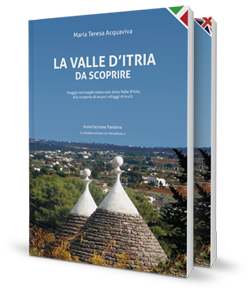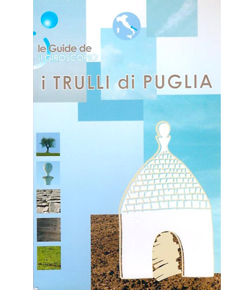Text translated by Google Translate.
Between nature, archaeology and history the Oasi Regionale Naturale Orientata Barsento is a wonderful place to discover and preserve, a journey through time capable of captivating visitors.
In the center of Puglia, on the southeastern Murgia also known as Murgia dei Trulli, surrounded by the beautiful cities of Alberobello, Noci, Putignano and Castellana Grotte stretches for more than 1100 hectares about the Oasi Naturale Barsento. The place in 1997 was recognized by the Puglia Region as a Regional Oriented Nature Reserve for the preservation and enhancement according to the high environmental and cultural interest. The Oasis is immersed in a dense forest, remnant of very ancient forests that covered Puglia centuries ago, characterized by oaks also with monumental specimens, oaks, valleys and chestnut, the latter oak finds its area of extension in Italy only on the Murgia Sud-Est. Many shrubs of the Mediterranean Bush, including many mastic trees, hawthorns, alaterns, to name a few. Where the emerging rock is most incisive are spread aromatic plants, such as thyme. In the spring orchid enthusiasts can admire many species in this Oasis, without catching them naturally. There's a lot of wildlife, but you can't see it. Turtles, hedgehogs, lizards, hares, foxes and many birds, the only ones that make their presence felt by singing.
The karst nature of the place has excavated caves then enlarged by man, such as the Grotta del Sapone visited in the Oasis, created sinkholes, walloons, where the water naturally settles. All the features listed so far have always determined that the place was suitable for human settlements. All around masserie (farms), arable land and pastures.
Archaeological research, in the area around, has unearthed numerous lithic finds, tombs, pottery, settlements of villages with huts and a very ancient road lattice, all elements that testify to a remote frequenting of the place with human settlements since preclassic eras. The strategic above-sea location and karst nature of the place facilitated life both for defensive and land control reasons, as well as for the possibility of accumulating water resources in lame and doline (karst depressions). The Messapi (ancient people) settled more firmly, a few centuries before the Roman colonization of Puglia. From the ancient Messapic language perhaps comes the name Barsento, then barza (high) and entum (which is), a name sprung from the strategic and control position that the site still maintains, because it is elevated.
Arriving at the Middle Ages, two documents dated one 1040 and the other 1115 testify to the existence of the Casale Barsento, crossed by the Via Barsentana that departed from Bari, passed from Norba (the current Conversano) and led to Barsento. Archaeological evidence also suggests a pre-existing Roman road trail. From here also passed another route that from Taranto passing through Barsento came to Monopoli. So in the Middle Ages the Barsento was an important crossroads where with a series of secondary tratturelli (trajectories) that intersected the Via Barsentana it also reached the smaller farmhouses scattered around.
In 1040 the Casale Barsentum, and Casaboli a nearby farmhouse, were destroyed by the fury of the Duke of Mottola, but it seems that the church, dedicated to the Assumption, was spared. Later the place was repopulated and inhabited until the 14th century, with the presence of a clergyman and Clerics, belonging to the diocese of Monopoli.
The Church of St. Maria Assunta of Barsento.
Of archaeological interest is also the area where the Church of Santa Maria of Barsento, dedicated to the Assumption, is located in a dominant position on a wide valley from which the Canale di Pirro is visible, an extensive and picturesque karst depression, full of arable land and farms.
The old thesis that the church with an adjoining convent would have arisen in the 6th century at the behest of Pope Gregorio Magno with the aim of evangelizing the local people after the barbarian invasions has now fallen. Also following this ancient thesis, it was an abbey held by the monks of St. Equizio who dedicated the church to the worship of the Assumption. It is now known with certainty that the monks of St. Equitix have never worked in Puglia, but only in Abruzzo and that the church has never been abbey.
Leaving aside other datings indicated by other scholars, the professor, university professor, Gioia Bertelli given the church between the 11th and 12th centuries, thesis also stemmed from a careful analysis of architecture that refers to other rural architectures of the same period, as evidenced by the observation of the three outer domes of the absids, with the typical trullana architecture of the place, well in advance of the spread of the trullo in the place many centuries later. The various essays carried out in the building showed overlapping floors and found a tomb with 13th-century coins. Probably the building was born in three aisles as you can see it today. The facade is cusp and covered with the typical chiancarelle, very thin and long limestone slabs with which the cones of the trulli are covered. The prothyrum covering the vestibule is also two pitched slopes covered with chiancarelle, dated between the 14th and 15th centuries. In the vestibule, two lithic seats leaning against the walls suggest that pilgrims and walkers were staying here to rest before religious functions began.
The church has three naves, has undergone some changes but immediately stands out the central altar in baroque style (17th century) finished with gilding that highlights the sculptural decorations, with twisted columns and a central painting depicting a Madonna con Bambino, on her left St. Pietro and to his right perhaps the pope St. Gregorio
Magno.
The last campaign of excavations unearthed in the church, on the central apse behind the altar, a monumental Déesis in the late Gothic style, which had been covered by another fresco now detached, waiting for a relocation that depicted a Christgram, a sun, a moon and a starry sky. The presence of a Déesis (the supplication of St. Giovanni Evangelista and the Vergine Maria to Gesù Cristo blessing for the salvation of humanity) also drops another widespread thesis, namely that the site was also an abbey. It was only a church with a funeral vocation with an adjoining convent, which has become a farmhouse in recent centuries. The same depiction of the Dèesis confirms this thesis, because it was always linked to a funeral dimension. The stylistic analysis places the fresco on the 14th century and attributes it to local painters. Older the frescoes of the right apsidal basin, where another Déesis is depicted that refers to Byzantine styles widespread in Puglia between the end of the 12th century and the beginning of the 13th century.
Church bibliography references:
La Chiesa di Santa Maria del Barsento by Vito Ricci
Arte nel contesto: la pittura medievale a sud-est di Bari - in "San Michele in Monte Laureto in Putignano" di Marcello Mignozzi.













